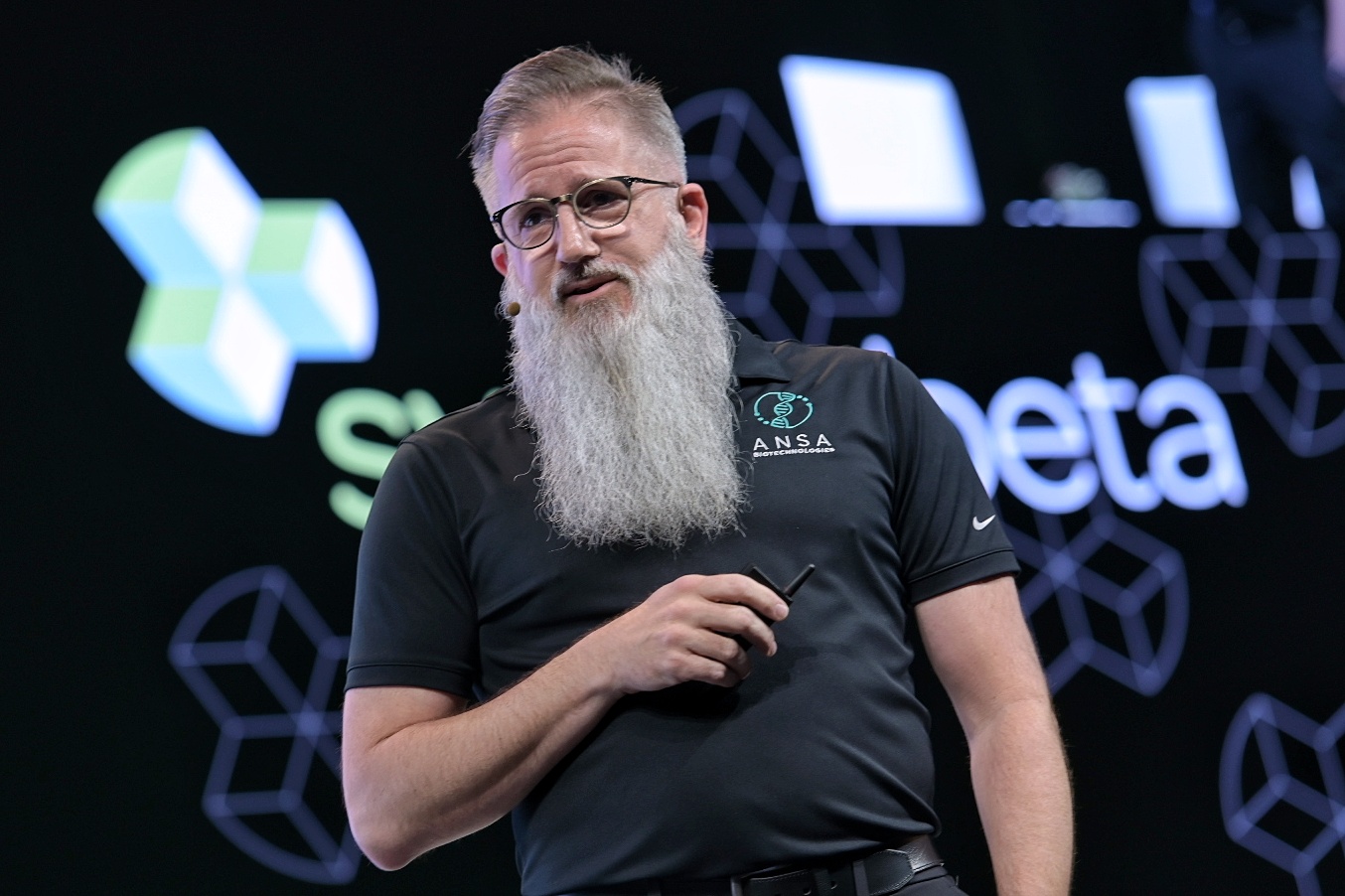
On India Trade Mission, California Lt. Gov. Eleni Kounalakis Seeks To Grow The Economy — And Protect The Environment
On India Trade Mission, California Lt. Gov. Eleni Kounalakis Seeks To Grow The Economy — And Protect The Environment
California and the San Francisco Bay Area-Silicon Valley want to deepen economic ties with India, a growing global economic powerhouse. And they want to do it while doing good for the environment.
That was the takeaway from a trade mission to India I took part in last week, led by the Bay Area Council. One of the key participants was California Lieutenant Governor Eleni Kounalakis. She chairs Governor Newsom’s International Affairs and Trade Development Interagency Committee and previously served as the U.S. Ambassador to Hungary under President Obama. Kounalakis came in part to promote trade and tourism with India, which is already California’s 13th largest trading partner, buying more than $600M of California almonds alone. And Indian tourists spend over $1.1B in California each year.“We have great universities, easy access to capital, and a government that's transparent and works for the people,“ Kounalakis said during the mission.
Tech, bio, and climate: California leads the way
But she's most proud of the fact that California does what most people said was impossible: grow a healthy economy and take care of the environment at the same time. California has led U.S. environmental policy for decades, and its ambitious goals are global in nature. Former Governor Jerry Brown even put a plan in place for the state to be carbon neutral by 2045.California may be experiencing something anticipated by Al Gore: sustainability as history’s biggest investment opportunity, having “the magnitude of the industrial revolution but the speed of the digital revolution.”While in India, Kounalakis also spoke at the Raisina Dialogue, a conference of world leaders hosted by India Prime Minister Narendra Modi and committed to addressing the most challenging issues facing the global community. There, Kounalakis spoke about California’s ambitious climate change plans, and how India can help California lead global climate action.
The Indo-California kinship
If California and India want to strengthen ties, they’re sure starting from a good place. A recent report from the Bay Area Council is chock full of data showing the strong trade relationship between the greater San Francisco Bay Area and India. From a cultural perspective, 667,000 Indians live in California, half of them in the Bay Area. Companies like Google, Microsoft, Adobe, Sun Microsystems, Memphis Meats, and Perfect Day are all linked to prominent current and former leaders of Indian origin.

“India’s technology, scale, entrepreneurial energy, and cultural ties to the region link it powerfully to the Bay Area and Silicon Valley,” said Jim Wunderman, President & CEO of the Bay Area Council. “These linkages present opportunities for the Bay Area and its Indian partners not just in IT and tech but also in fields like synthetic biology, healthcare and renewable energy — fields where the Bay Area excels and India’s needs and capacities will grow.”These cultural ties are complemented by economic parities. India’s $2.7 trillion economy is the closest national economy in comparison to California's $3.0 trillion economy. And although they are very different in population (1.3 billion versus 40 million), India and California share deep economic roots in both agriculture and technology.But as tech meets bio and both economies bloom, what happens to emissions? California reported in 2019 that the carbon intensity of its economy declined by 4.5% even as its GDP grew 3.6%.On the other hand, India’s emissions grew 4.8% in 2018, along with a big 7.0% jump in GDP. In fairness, India’s per capita emissions were slightly below the global average and contributed 7% to the global carbon dioxide burden. The U.S. was responsible for 14% of the world’s carbon emissions — that’s twice the carbon for one-quarter the number of people.Regardless, more action is needed to achieve both economic and environmental success on a global scale. And every industry is going to face distinct challenges and opportunities to replacing fossil energy with other, more sustainable sources.Air travel—jet fuel, in particular—might just be one area radically transformed by synthetic biology in the not-so-distant future with the aim of achieving that goal.
Consumers pushing airlines for green biofuels
Also on the trade mission with us was Janet Lamkin, California President of United Airlines. United was touting its new direct flight between San Francisco and Delhi, but Lamkin also said she is aware of the flight shaming that's going on in protest of carbon pumped out of jet planes. Airline customers, particularly in the Bay Area and California, are asking United and others to do more about climate change.“At United, we have a vision to decarbonize commercial air travel, and we believe sustainable aviation fuel is the critical path to achieving this vision,” Lamkin told me. United was the first U.S. airline to use commercial-scale volumes of sustainable aviation fuel for everyday operations, and daily flights out of Los Angeles continue to use these low carbon fuels. “There is still much more progress to make towards decarbonization,” she said.To that end, United has invested $30 million in California-based Fulcrum BioEnergy, which provides United with 90 million gallons of low-carbon jet fuel annually, derived from household waste. The two companies are also jointly developing waste-to-jet fuel plants across North America.India’s largest company is thinking exactly along these lines.
India’s biostrategy for fueling the world
Reliance Industries Limited is India’s largest private business. Known best as a petroleum giant, it has recently grown to encompass food, electronics, fashion, and more. I visited the city of Jamnagar, home to the largest oil refinery in the world and run by Reliance. The refinery processes more than 1.3 million barrels of oil every day, producing carbon dioxide as a waste by-product.

Can the largest petroleum refinery in the world go green? Yes, if forward-thinking companies in India and California have their way. Reliance Industries LimitedIt may seem paradoxical for a petroleum giant to seek fossil fuel alternatives. But like California, Reliance understands that what’s good for the environment is usually good for business. So it created a synthetic biology program of 150+ scientists and researchers to seek such solutions. That group recently developed a technology program called “algae to oil” that combines the carbon dioxide waste from its petroleum refineries with algae and sunlight to produce a bio crude oil. Reliance says it can make this bio-crude for about $100 a barrel without subsidy. That’s a little higher than petroleum crude ($60 a barrel), but the algal oil is superior in that it uses carbon that would otherwise pollute the environment.

Mukesh Ambani, leader of Indian mega-conglomerate Reliance Industries Limited, is taking his business directly into synthetic biology, where tech and bio are converging to provide green solutions even for the petroleum industry. (Forbes India)Reliance already supplies conventional jet fuel to a number of airlines through its refueling station network in India. Once the biocrude program scales up, then bio-based jet fuel could be on the way and the distribution channels are already in place, potentially giving airlines like United and its customers more of the climate change action they are demanding.I met with Mukesh Ambani, the Chairman of Reliance, who sees growth in the company’s synthetic biology program and diversifying into other products beyond fuel. “Biology in the next 20-30 years will lead the world,” he said.
Bioeconomic realities
The transformation of our global economy from fossil fuels to more sustainable bio-based sources is an ongoing battle. For the foreseeable future, it's probably going to be cheaper to pump oil out of the ground and refine it, rather than capture and distill existing carbon dioxide into something of value.But technology isn’t the only tool available to us. Economic incentives such as cap-and-trade programs also play a critical role. The elegance of cap-and trade-systems like the one in California is that they incentivize business practices that use sustainable carbon by awarding carbon credits, and discourage carbon-emitting practices by taxing them. These and other policy levers can give technologies like synthetic biology the edge needed to scale up solutions and ultimately tip the economic scales in favor of cleaner alternatives.“California has already invested about $25B in clean energy and clean transportation,and has a robust cap and trade program,” said Kounalakis. “We welcome new carbon capture businesses to set up shop in California.”If Reliance were to establish a facility in the U.S., then United Airlines would have a local biofuel supplier, meaning their new direct flight to India could be a carbon-neutral ride. That would be good for the economies of India and California. Perhaps more importantly, it would be great for the environment.Follow me on twitter at @johncumbers and @synbiobeta. Subscribe to my weekly newsletters in synthetic biology and space settlement. Thank you to Kevin Costa for additional research and editing in this article. I’m the founder of SynBioBeta, and some of the companies that I write about — including Reliance Industries Limited — are sponsors of the SynBioBeta conference and weekly digest — here’s the full list of SynBioBeta sponsors.Originally published on Forbes https://www.forbes.com/sites/johncumbers/2020/01/23/on-india-trade-mission-california-lt-gov-eleni-kounalakis-seeks-to-grow-the-economy--and-protect-the-environment/



.svg)










-min.png)
.gif)